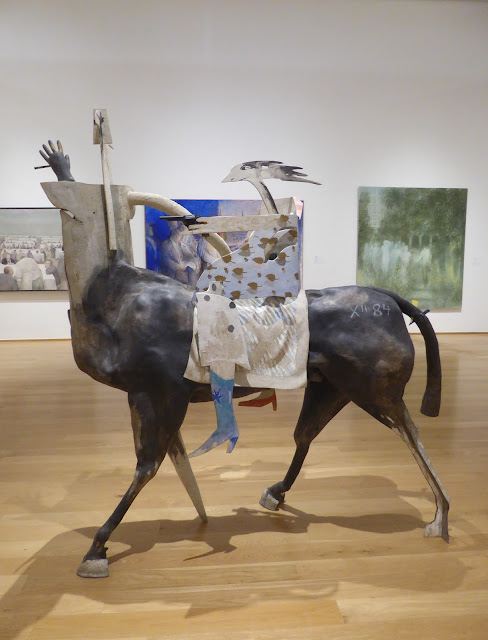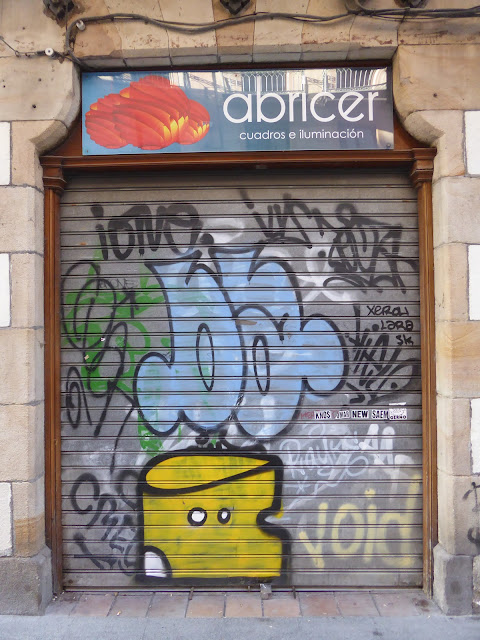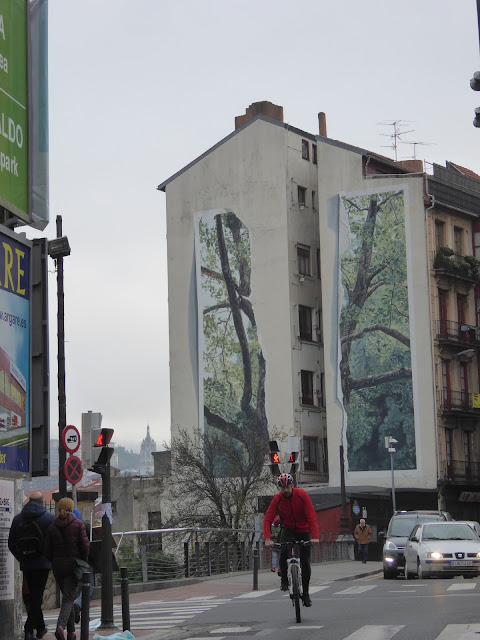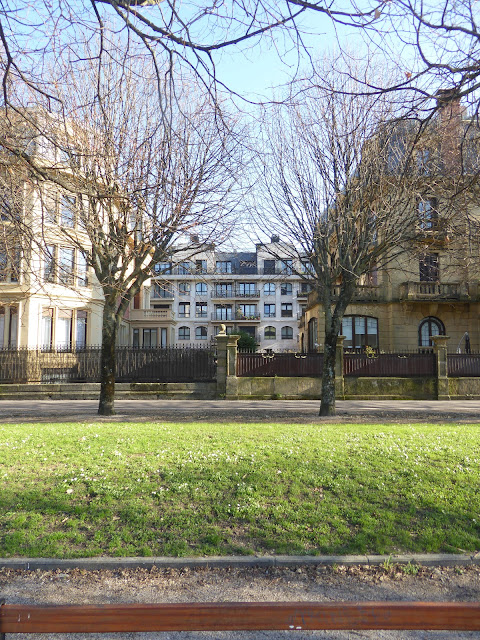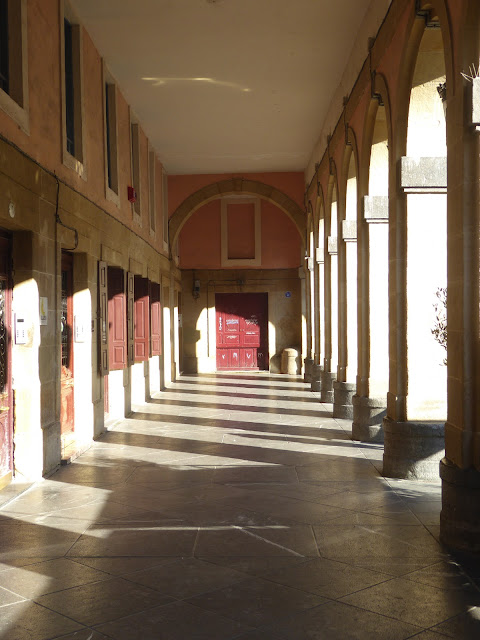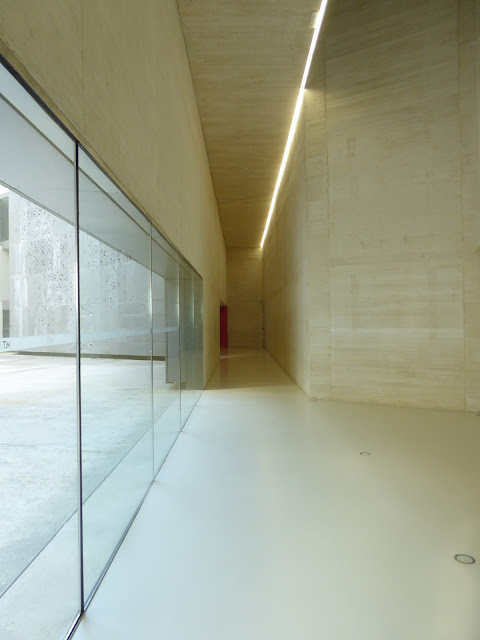BILBAO / BILBO
THE PLACE
Bilbao (English usage)
Bilbao (in Spanish)
Bilbo (in Euskara, the Basque language)
As of this moment and despite years of peaceful and not-so-peaceful attempts at independence, the city of Bilbao is located in the Spanish Province of:
Biscay (English)
Viscaya (Spanish)
Bizkaia (Euskara)
which is the largest population center of what is known as the:
Autonomous Community of the Basque Country
Comunidad Autonoma del Pais Vasco (Spanish)
Euskal Autonomia Erkidegoa (Euskara).
The Basques are an indigenous ethnic group "characterized by their language...who primarily inhabit a region that is located around the western end of the Pyrenees and straddles parts of north-central Spain and south-western France." Within Spain, three Porvinces comprise the Basque Country; Biscay, Alava, and Gipuzkoa. Biscay is named after the Bay of Biscay which is 16 km (10 mi.) to the north.
Bilbao dates from the early 14th century and in modern times has been known as a heavy industrial and port center. The city's population today is 345,000 and is part of a larger metropolitan area that has roughly 1 million inhabitants. Its relationship to Europe, very much a result of its isolated geography and its proximity to France, is more pronounced than elsewhere in Spain. This geographic reality combined with a culture that has its own history, traditions, and language distinct from the rest of Spain makes a visit to Bilbao much like visiting a foreign country.
(Opening photo: The facade of a community center of the Basque Nationalist Party / Partido Nacionalista Vasco - PNV [Spanish] / Euzko Alerdi Jeltzalea - EAJ [Euskara]. Loosely translated, the sign reads: "Thanks. Transformation. Challenge.")
Photos from the Archaeological,
Ethnographic and Basque History Museum of Bilbao, commonly known as the Basque
Museum or Basque History Museum. (In Spanish: Museo Vasco; in Basque: Euskal Museoa). They
are from a show of works by the photographer Eulalia de Abaitua y
Allende-Salazar or Eulalia Abaitua (25 January, 1853 – 16 September,
1943.)
From Wikipedia: Eulalia spent most of her life in
Bilbao. "She had four children but
she spent her time taking photographs of sardines being sold, sailors,
celebrations as well as women carrying water or washing clothes in the
river. She used glass plates that were
4.5 x 10.7 cm and she used stereoscopic exposures. It is said that today her
style would see her recognised as a leading photo journalist."
There was
one room of her stereoscopic efforts (the first photo above) and the rest of the photographs were hung
along the formal staircase of the museum and in other more intimate spaces of
the museum. Very impressive. Her work obviously reminded me of Dorthea Lange's
- I wonder if Eulalia was one of her inspirations? The attached images are obviously photos of
the photos - you can find much better shots on the internet.
A PANORAMA VIEW OF BILBOA FROM THE
ARTAXA MOUNTAIN OVERLOOK
 |
| . |
The overlook is reached by the Funicular de Artaxa, a 770 meter long, single-track (with cross-over) railway that rises 226 meters to the top of the mountain. The funicular was completed in 1915. Bilbao itself is situated on both banks of an estuary, known variously as the Estuary of Bilbao, or "of the Nervion," or "of Ibaizabal," or "of the Nervion-Ibaizabal," formed by the rivers Nervion and Ibaizabal. It is located on what is know as the "Basque threshold," between the larger Cantabrian Mountains and the Pyrenees.
.

The Iberdrola Tower, (Iberdrola, Spain's main electrical supplier) designed by Cesar Pelli, who also happens to be the architect for Los Angeles' Pacific Design Center, was completed at the end of 2011. At 165 meters high (541 ft.) high, it now figures prominently (overwhelmingly?) in the Bilbao landscape (see "Overlook" above). The residential blocks at its base were design by Carles Ferrater.
Roughly translated: "This is fun? Put yourself in its place." Agitprop for stopping bullfighting in Spain.
Bilbao's former wine warehouse, a modernist building declared to be a "Site of Cultural Interest" by the Basque Government in 1999, now offers "a varied cultural programme featuring art, knowledge, design, science and the new technologies." It consists of a cinema multiplex, a fitness center, a library, gallery spaces, an auditorium, shops, and a restaurant.
In the main space, the "Atrium of the Cultures," 43 columns in different architectural styles and materials, including wood, brick, ceramic, stone, and metal. The collection is intended to represent, "the infinity of cultures, architectures, wars, and religions man has gone through in history."
On one side of the Center, a pedestrian plaza fronted by a new, government building.
Frank Gehry, Architect (Los Angeles)

STREET SCENES
.
 |
| The City Hall, completed in 1892, Joaquin Rucoba, architect. |
 |
| New "City Hall Headquarters" to the rear of the existing City Hall, IMB Arquitectos, 2011. Photo © Iñigo Bujedo Aguirre |
 |
| Estacion de la Concordia. |
 |
| Iglesia de San Nicholas, 1743-1756. |

The Iberdrola Tower, (Iberdrola, Spain's main electrical supplier) designed by Cesar Pelli, who also happens to be the architect for Los Angeles' Pacific Design Center, was completed at the end of 2011. At 165 meters high (541 ft.) high, it now figures prominently (overwhelmingly?) in the Bilbao landscape (see "Overlook" above). The residential blocks at its base were design by Carles Ferrater.
Roughly translated: "This is fun? Put yourself in its place." Agitprop for stopping bullfighting in Spain.
ARKEOLOGI MUSEOA / MUSEO DE ARQUEOLOGIA
(Archaeological Museum)
Addition and renovations, 2008
AZKUNA ZENTROA / AZKUNA ZENTRUM
(Azuna [Culture and Leisure] Center)
Ricardo Bastida, Architect (Bilbao)
Completed 1909
Philippe Starck (Paris)
Repurposing of interior, completed 2010
Bilbao's former wine warehouse, a modernist building declared to be a "Site of Cultural Interest" by the Basque Government in 1999, now offers "a varied cultural programme featuring art, knowledge, design, science and the new technologies." It consists of a cinema multiplex, a fitness center, a library, gallery spaces, an auditorium, shops, and a restaurant.
In the main space, the "Atrium of the Cultures," 43 columns in different architectural styles and materials, including wood, brick, ceramic, stone, and metal. The collection is intended to represent, "the infinity of cultures, architectures, wars, and religions man has gone through in history."
On one side of the Center, a pedestrian plaza fronted by a new, government building.
MUSEO GUGGENHEIM BILBAO /
GUGGENHEIM BILBO MUSEOA
(Guggenheim Museum, Bilbao)
Frank Gehry, Architect (Los Angeles)
WIKIPEDIA:
"When the Guggenheim Museum Bilbao opened to the public in 1997, it
was immediately hailed as one of the world's most spectacular buildings in the
style of Deconstructivism (although Gehry does not associate himself with that
architectural movement), a masterpiece of the 20th century. Architect
Philip Johnson described it as "the greatest building of our
time", while critic Calvin Tomkins, in The New Yorker,
characterized it as "a fantastic dream ship of undulating form in a cloak
of titanium...its brilliantly reflective panels also reminiscent of fish
scales." Herbert Muschamp praised its "mercurial
brilliance" in The New York Times Magazine. The
Independent calls the museum "an astonishing architectural
feat". The building inspired other structures of similar design
across the globe."
Add to this list of superlatives the coining of a new phrase, "The Guggenheim Effect," (or, sometimes, "The Bilbao Effect") where one spectacular building causes a local and then wider renaissance of entire neighborhood or city. This is exactly what this museum did. The Guggenheim is now THE major tourist attraction in Bilbao and one of THE major tourist attractions in Spain. The neighborhood has gone from a crime-ridden "decrepit waterfront area" to beyond gentrification all the way into the land of what one critic has called, "cultural imperialism."
I have no problem with a good piece of sculpture. And this is a very good piece of sculpture. It also happens to be a very bad museum, for any number of reasons - from its rabbit warren circulation, to its over-scale and dis-proportioned galleries, to the way it overwhelms every piece of art in its collection and in its temporary exhibitions. It is clearly a mess, but an awesome mess. (Give credit where credit is due...) If you want to see and enjoy art in an exciting but sympathetic architectural setting, go to the city's other contemporary art museum, the Bilboa Fine Arts Museum (see below).
 |
"Bilbao Puppy" by Jeff Koons. |
The Richard Serra (airplane hanger) wing.
If you are an architect, you have seen this photograph. Even if you are not, you probably have seen it. It is the seminal shot by which the Guggenheim is best known. Do not blame me. I wanted to see if I could match the professionals. Got it in one...
THE BILBAO FINE ARTS MUSEUM
Original building, Fernando Urrutia and Gonzalo Cardenas, Architects, 1945
Addition, Alvaro Lebanon and Ricardo de Beascoa, Architects, 1970
New, replacement connecting wing, (Architects unknown), 2001
 |
| (Photo by others.) |
MERCADO DE LA RIBERA / LA RIBERA MERKATUA
(Ribera Market)
Original building, Pedro Ispizua, Architect, 1929
Renovation, Emilio Puertas Arquitectos, 2010
STREET ART
 |
IIIIIIIIIIIIIIIIIIIIII
SAN SEBASTIÁN / DONOSTIA
Located on the coast of the Bay of Biscay, San Sebastian is a one hour-ten minute pleasant bus ride through the mountains from Bilbao. It is only 20 km (12 miles) from the French border, and the French influence is pronounced throughout the city of 187,000 (metropolitan area of over 437,000). It is also the capital city of Gipuzkoa, another Spanish Province. (Gipuzkoa is Basque and the official, Spanish, name of the Province since 2011.)
San Sebastian is one of the major tourist destinations in Spain and home to a large ex-pat community. I spent less than a day in the city itself and was suitably impressed by the setting and the urban landscape, particularly the Haussmann-style early 20th century city center. Less attractive were the hordes of tourists like myself and the commercial environment obviously catering to us. I sensed, though, that if you could move away from the more impacted areas, there was a decent city hiding behind the visitors' facade.

 |
Kursaal Congress Center and Auditorium, Rafael Moneo, architect. Opened, 1999. |
 |
Obviously, a building that "reads" better at night, although still unclear as to why it has been acclaimed as it has. (Above three night photos by others.) |
 |
Plaza de la Constitucion / Konstituzio Plaza (Constitution Square) |
MUSEO SAN TELMO / SAN TELMO MUSEOA
(San Telmo Museum - STM)
16th Century Dominican Convent
Addition and renovations, completed 2011
Nieto Sobejano Arquitectos (Madrid and Berlin)
____________________________________________
Copyright © 2017-2022 Benjamin Clavan




























































































